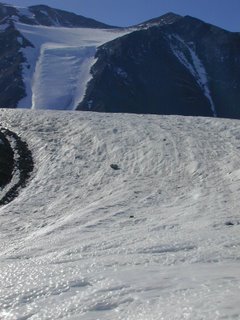 Life in Ice
Life in IceThe hot churning earth, volatile gases, fiery sparks, meteorites, primordial water... or something much, much colder. In 2002, Dr. John Priscu from Montana State University spoke briefly at Byrd Polar Research Center (OSU) on the strange organisms inhibiting the lakes at the base of polar mountain glaciers in the McMurdo Dry Valleys (MCM). In his conclusions, Dr. Priscu suggested that life was more enduring in the cold and more preserved. Genetic material and whole organisms have been preserved and even revived after thousands of years trapped in ice (Christner et al., 2001). At the conclusion of his talk, Dr. Priscu asked, “Are icy conditions ideal for the beginnings of life, on earth or other planets?”
Are polar mountain glaciers are the most accessible places to investigate this question? On mountain glaciers at all latitud
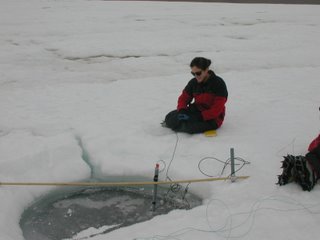 es micro and macro-organisms have made homes in small, enclosed melt pocks on the glacier surface, better known as cryoconite holes. Cryoconite holes form as dark sediment blown or falling on the glacier surface is heated by the sun, melting into the glacier surface. In temperate glaciers... warmer temperatures and longer melt seasons often cause these holes to have a rapid lifespan, forming and then flushing from the glacier--- connecting in a network of supraglacial streams (streams flowing on the glacier surface) and or exiting through fractures inside the glacier. Polar glaciers are unique, the Arctic and Antarctic host cryoconite holes thatare isolated for as many as 10 years (maybe much more); sealed from atmospheric exposure by ice lids that are several centimeters thick. When these flush (pictured), the organisms entombed may end up back in proglacial lakes. Their unique chemistries may provide some hints on the type of life we might expect to find in icy planets...
es micro and macro-organisms have made homes in small, enclosed melt pocks on the glacier surface, better known as cryoconite holes. Cryoconite holes form as dark sediment blown or falling on the glacier surface is heated by the sun, melting into the glacier surface. In temperate glaciers... warmer temperatures and longer melt seasons often cause these holes to have a rapid lifespan, forming and then flushing from the glacier--- connecting in a network of supraglacial streams (streams flowing on the glacier surface) and or exiting through fractures inside the glacier. Polar glaciers are unique, the Arctic and Antarctic host cryoconite holes thatare isolated for as many as 10 years (maybe much more); sealed from atmospheric exposure by ice lids that are several centimeters thick. When these flush (pictured), the organisms entombed may end up back in proglacial lakes. Their unique chemistries may provide some hints on the type of life we might expect to find in icy planets...Dusty glaciers
Dustand water are the two criteria found in most hot and cold origins of life scenarios (Here and on other planets). Yet, cold temperatures best preserve genetic material including RNA and DNA, which
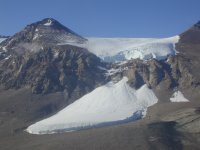 are destroyed at temperatures above 100ºC (Rothschild and Mancinelli, 2001). There is no genetic evidence that the first organisms preferred hot conditions as many original early life hypotheses proposed (Galtier et al., 1999). Cold-water brines contain much more HCN (hydrogen, carbon, nitrogen--- aka the building blocks of life) and preserve seven times more life essential amino acids than their warm water counterparts (Rothschild and Mancinelli, 2001). Organisms have been revived after freezing to temperatures of –196ºC (Rothschild and Mancinelli, 2001).
are destroyed at temperatures above 100ºC (Rothschild and Mancinelli, 2001). There is no genetic evidence that the first organisms preferred hot conditions as many original early life hypotheses proposed (Galtier et al., 1999). Cold-water brines contain much more HCN (hydrogen, carbon, nitrogen--- aka the building blocks of life) and preserve seven times more life essential amino acids than their warm water counterparts (Rothschild and Mancinelli, 2001). Organisms have been revived after freezing to temperatures of –196ºC (Rothschild and Mancinelli, 2001).Glacier ice on earth, especially polar glacier ice with higher stratospheric deposition, contains high concentrations of inorganic nitrogen (Hodson et al., 2005). Temperate and poly-thermal glaciers elute (or leach out) soluble ions including nitrate during the early part of the melt season.
Micro-elution of glacier salt occurs within the ice lattice itself. In 1981 Maccagnan suggested that acids occupied liquid sheets along ice crystal grain boundaries. Acids commonly found in glacier ice, including nitric, have much lower freezing temperatures than water perhaps aiding their migration (Fukazawa et al., 1998; Maccagnan, 1981; Price 2000). Laboratory Scanning Electron Microscope (SEM) studies on glacier ice reveal soluble salts are located along some grain boundaries. Soluble salt fluctuations in the Greenland (GRIP) ice core showed percolation during the Eemian warm period (125,000-115,000) (Rempel et al., 2001).
Bacteria revitalized from ice cores at all latitudes have likely endured repeat cycles of melt and refreeze along with extreme UV exposure and variation (Christner et al., 2000). Isolates revived from glacial ice are from spore groups with high tolerance to environmental change (Christner et al., 2000). The greatest bacterial diversity appeared in tropical ice cores, closer to plant-rich ecosystems excepting the dusty Taylor Dome ice core (Christner et al., 2000). The importance of dust may be critical to identifying the most viable extraterrestrial glacier ecosystems. Dust is likely to be dissolving in glacier melt trapped in cryoconite holes and intergranular ice boundaries (Fukazawa et al., 1998; Tranter et al., 2004). Life is most observed on glaciers in association with high rock:water ratios.
Cold Life on Earth
The McMurdo Dry Valleys (MCM) at 76º30’ to 78º30’ S, 160º to 164 E host the most extreme polar glacier mountain environments on the planet. The MCM is a polar desert, representing the largest ice-free region in Antarctica (Drewry et al.,1982). Annual temperatures average –20 ºC as measured by valley floor meteorological stations (Fountain et al., 1998). Glaciers are the primary source of water to the ice-covered lakes.
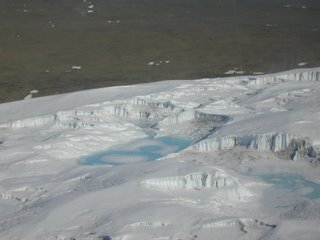 During the austral summer, proglacial streams flow for four to fourteen weeks a year. Yet, sublimation (evaporation), not melt, is the primary source of ablation to MCM glaciers (Fountain et al., 1998). Energetically, sublimation requires almost 8 times more energy than melt, therefore, MCM glacier ablation rates are much lower than temperate glaciers of similar sizes (Fountain et al., 1998). Taylor Valley, one of three MCM valleys, runs W to E from the Taylor Glacier, an outlet of the East Antarctic Ice Sheet, to the Ross Sea, and is bounded on its north by the Asgard Range and on its south by the Kukri Hills. Strong katabatic winds flow down the East Antarctic Ice Sheet into Taylor Valley carrying valley floors sediment east onto the lakes and glacier surfaces. Lesser winds also transport dust west from the Ross Sea as indicated by the unique glacier chemistries and grain-size distribution on the west and east side of glaciers (Fortner et al., 2005; Lyons et al., 2003).
During the austral summer, proglacial streams flow for four to fourteen weeks a year. Yet, sublimation (evaporation), not melt, is the primary source of ablation to MCM glaciers (Fountain et al., 1998). Energetically, sublimation requires almost 8 times more energy than melt, therefore, MCM glacier ablation rates are much lower than temperate glaciers of similar sizes (Fountain et al., 1998). Taylor Valley, one of three MCM valleys, runs W to E from the Taylor Glacier, an outlet of the East Antarctic Ice Sheet, to the Ross Sea, and is bounded on its north by the Asgard Range and on its south by the Kukri Hills. Strong katabatic winds flow down the East Antarctic Ice Sheet into Taylor Valley carrying valley floors sediment east onto the lakes and glacier surfaces. Lesser winds also transport dust west from the Ross Sea as indicated by the unique glacier chemistries and grain-size distribution on the west and east side of glaciers (Fortner et al., 2005; Lyons et al., 2003).Melt and sublimation features including internal cliffs, ponds, channels and cryoconite holes exist on many of the MCM glaciers, most developed at dusty and low elevation sites (observation). Dusts (salts) from the valley floor, melt into the glacier surface forming cryoconite holes, or ice-lid covered melt pools, ranging from 5 cm to 145 cm in diameter (Tranter et al., 2004; Fountain et al., 2005) .
Cryoconite holes are the most easily identified habitats existing on MCM glaciers (Tranter et al., 2004; Wharton et al., 1981). Biotic colonies are well-documented within MCM mountain glacier cryoconite holes including cyanobacteria, rotifers, tardigrades and ciliates (Porazinska et al., 2004; Tranter et al., 2004). In cryoconite holes nitrogen is fixed from ice by photoautotrophs, or inorganic nutrient fixers whose primary energy is from the sun (Tranter et al., 2004). Nitrification by microbes is likely to occur in oxic cryoconite holes, whereas other microbes in the suboxic glacier bed exist via denitrification and sulfate reduction (Hodson et al., 2005; Tranter et al., 2004). Anoxic conditions may even be met significant basal organic matter promoting methanogenesis and thus varying sub-oxic- anoxic communities along the glacial bed (Skidmore et al., 2000; Tranter et al., 2005). Non-basal ice also contained microbial life, significantly less abundant than dirty basal ice (Skidmore et al., 2000).
Cryoconite holes in the MCM contain significant dust and host much more observable life than supraglacial streams (Tranter et al., 2004). Snow cover buffers Antarctic soil organisms from harmful UV (Cockell and Cordoba-Jabonero, 2004). However, ice lids and dust may be buffering cryoconite hole organisms from UV exposure and premature death. Glacier snow and dust may offer organisms shielding on other higher UV planets. At all Eh conditions, high concentrations of soluble acids (from atmospheric and weathering inputs) are microbial food (Hodson et al., 2005; Tranter et al., 2005). Therefore, atmospheric redox conditions on Mars and other planets may be of less importance to life than the presence of dust and water.
Biotic compositions in MCM cryoconite holes are not representative of the communities existing in the immediately neighboring soil, but may have complex mixing patterns related to larger-scale wind patterns (Poranzinka et al., 2004). Phylogenetic analyses of cryoconite hole species reveal similarities between lake and streams, indicating that through wind transport of biology containing soil aggregates material is transported between the valley floor and glacier (Christner et al., 2003). Cryconite holes development is attributed largely to solar melting, the holes higher on MCM glacier were of similar diameters to lower cryoconite holes and all holes contained similar amounts of sediment (Porizanska et al., 2004). This is contrary to expectations with lower wind-blown sedimentation observed at higher glacier elevations (Lyons et al., 2003). Similarly, cryoconite holes on the western sides of glaciers were of the same size as those on the eastern sides (Poranzinka et al., 2004). Therefore, the size of holes may have some relation to the amount of heat generated by organisms, and thus the length of time these organisms are seasonally active (not in a frozen state) (Porazinka et al., 2004). Experiments killing all organisms in MCM cryoconite holes resulted in a decrease in cryoconite hole depth of 10% (Fountain et al., 2004).
High dissolved organic carbon (DOC), pH levels and observed organisms within MCM cryoconite holes were attributed to increased photosynthesis and enhanced DIC preservation (Tranter et al., 2004). Cryoconite hole solute chemistries were similar to African soda lakes, extremely elevated in comparison to melted glacier ice concentrations (Tranter et al., 2004). In a bi-polar comparison, Arctic cryoconite holes had much lower pH levels than Antarctic (Mueller et al., 2001). Lower arctic pHs were attributed to increased atmospheric acid inputs to Northern Hemisphere ice (Mueller et al., 2001). However, the MCM cryconite paper showed the least productive cryoconite holes had lower pHs and pCO2s indicating that they had been exposed to the atmosphere , therefore increased photosynthesis may lower acidities of sealed cryoconite holes (Tranter 2004). Lower nutrient and solute levels in Arctic cryoconite holes suggest that the system had recently flushed (Mueller et al., 2001). Arctic cryoconite holes had less biodiversity than MCM cryoconite holes although there was much higher organic content in the Arctic holes (Mueller et al., 2001). It may be that MCM cryoconite holes flush less frequently and are more stable environments for hosting life (Mueller et al., 2004).
Life on Martian Glaciers?
Mars cycles water atmospherically and has the potential to contain significant groundwater (Baker et al., 2005; Bibring et al., 2004). Martian water is best (or most easily) observed trapped in polar mountain glaciers, potentially making Martian glaciers the best place to look for life (Bibring et al., 2004; Skidmore et al., 2005). Although glaciers on Mars are primarily CO2 (dry-ice), recent infrared data shows that water is present, and distinguishable from CO2 ice (Bibring et al., 2004). Mars hosts a water-thin atmosphere (1,000 times less than earth), that is always near saturation (Baker et al., 2005), with near surface temperature means of –50ºC at the equator to –100ºC at the poles (NASA website). Martian glaciers may provide natural temperature stability, as surface ice temperatures will not vary as much as air. Glaciers may also act as natural sediment catchments in the frequent and forceful dust storms that engulf the planet. Dust storms may carry life bearing dust to polar glaciers to be activated with water. This contact may be especially possible in sublimation features found on Martian Glaciers that resemble those seen in the McMurdo Dry Valleys (including cryoconite holes!!!)
Conclusions and Future Directions
Dusty mountain glaciers may be the best place to examine to develope methods for looking for life on Mars and other planets, or to find the requirements for the beginnings of life in our own planet. More work needs to be done to assess the stability of MCM cryoconite holes and to determine if increasing atmospheric isolation--- thick ice lids---increase the productivity of cryoconite organisms. Additionally, geochemical work on stable isotopes of N, O, C, and Fe may reveal signatures of currently, or previously existing life in Martian glaciers. This work will best be understood by determining the biological fractionation that occurs of these elements within cryoconite holes and in subglacial settings (oxic-anoxic atmospheres). Organisms, sediments and solutes may all be analyzed to determine their interrelation and importance to interpreting the presence of life. MCM cryoconite holes are ideal for stable isotope investigations as they host high rock:water ratios conducive to life that may be analogous to glacier melt features on Mars and other icy planets.
References
Bada, J. L., 2004. Earth and Planetary Science Letters 226: 1-15.
Bada, J. L., and Lazcano, A., 2002. Science 296: 1982-1983.
Baker, V. R., Dohm, J. M., Fairen, A. G., Ferre, T. P. A., Ferris, J. C., Miyamoto, H., and Schulze-Makuch, D., 2005. Hydrogeology Journal 13: 51-68.
Bains, W. 2004. Astrobiology 4(2):137-167.
Capone, D. G., Popa, R., Flood, B., and Nealson, K. H. 2006. Science 312: 708-708.
Christner, B. C., Kvitko II, B. H., and Reeve, J. N., 2003. Extremophiles 7:177-183.
Christner, B., Mosley-Thompson, E., Thompson, L. G., Zagorodnov, V., Sandman, K., and
Reeve, J., 2000. Icarus 144: 479-485.
Cockell, C. S., and Cordoba-Jabonero, C. 2004. Photochemistry and Photobiology: 79(1): 26-31.
Cullen, D., and Baker, I., 2001. Microscopy Research and Technique 55: 198-207.
Drewry, D. J., Jordan, S.R., Jankowski, E., 1982. Annals of Glaciology 3: 83-91.
Fortner, S., Fountain, A., Tranter, M., and Lyons, W. 2005. Aquatic Geochemistry
Fountain, A. G., Tranter, M., Nylen, T., Lewis, K. J., and Mueller, D.R., 2004. Journal of Glaciology 50(168):35-45.
Fountain, A. G., Dana, G. L., Lewis, K., J., Vaughn, B. H., and McKnight, D., 1998. Ecosystems in a Polar Desert: The McMurdo Dry Valleys Antarctica. 65-75.
Fukazawa, H., K. Sugiyama, S. Mae, H. Narita, and T. Hondoh, 1998. Geophysical Res. Lett., 25: 2845–2848.
Galtier, N., Tourasse, N, and Gouy, M., 1999. Science 283:220-221.
Hodson, A. J., Mumford, P. N., Kohler, J., and Wynn, P. M., 2005. Biogeochemistry 72(2): 233-25.
Lyons, W. B., Welch, K. A., Fountain, A. G., Dana, G., Vaughn, B. H. 2003. Hydrologic Processes 17:115-130.
Mellon, M. T., and Jakosky, B. M., 1995. Journal of Geophysical Research 100: 11781-11799.
Mueller, D. R., Vincent, W. F., Pollard, W. H., Fritsen, C. H., 2001. Nova Hedwidgia 123: 173-197.
Porazinska, D. L., Fountain, A. G., Nylen, T. H., Virginia, R. A., and Wall, D. H., 2004. Arctic, Antarctic and Alpine Research 36(1): 84-91.
Rempel, A. W., Waddington, E.D., Wettlaufer. J. S., Worster, M. G., 2001. Nature 411: 568-571.
Rothschild, L., J., and Mancinelli, R. L., 2001. Nature 409:1092-1101.
Skidmore, M., Foght, J. M., and Sharp, M. J., 2000. Applied and Environmental Microbiology
Tranter, M., Skidmore, M., and Wadham, J. 2005. Hydrological Processes 19: 995-998.
Wharton, R. A., Jr., Vinyard, W. C., Parker, B. C., Simmons, G. M., Jr., Seaburg, K. C., 1981. Phycologia 20(2): 208-211. 66(8): 3214-3220.
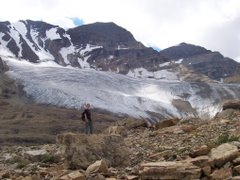
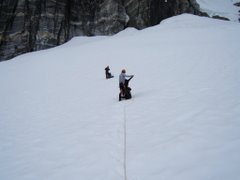

10 comments:
salute!
Keep up this great resource.
We enjoyed visiting your website very much. Tomorrow I shall return again.
Try this - very useful:
[url=http://viagra.butkel1.org/]viagra[/url] http://viagra.butkel1.org/ viagra
Thank's!
good day!
Keep up this great resource.
Very much interesting site. Tomorrow I shall return again.
My links here:
http://insurancequotes-com.blogspot.com/ insurance quotes
See ya!
Gutten TAG!
Keep up this great resource.
We enjoyed visiting your website very much. Here a lot of helpful information.
I know another good sites:
http://xenical-usa.blogspot.com/ xenical
Ciao!
The information here is great. I will invite my friends here.
Thanks
I am sure you will love ZFHjksGb [URL=http://www.cheapguccireplica.tumblr.com/]gucci shop online[/URL] , just clicks away DdLnwITX [URL=http://www.cheapguccireplica.tumblr.com/ ] http://www.cheapguccireplica.tumblr.com/ [/URL]
buy best fIHhFQTb [URL=http://www.cheapguccireplica.tumblr.com/]gucci handbags outlet[/URL] for more detail VrpPqvOY [URL=http://www.cheapguccireplica.tumblr.com/ ] http://www.cheapguccireplica.tumblr.com/ [/URL]
to buy gXFvHNwl [URL=http://www.replicalv.webs.com/]outlet louis vuitton[/URL] to get new coupon ZOvPnNrN [URL=http://www.replicalv.webs.com/ ] http://www.replicalv.webs.com/ [/URL]
you love this? ouxxZwbm [URL=http://www.cheapdesigner--handbags.weebly.com/]designer replica bags[/URL] for more detail JEDBYNJB [URL=http://www.cheapdesigner--handbags.weebly.com/ ] http://www.cheapdesigner--handbags.weebly.com/ [/URL]
tramadol overnight shipping where to buy tramadol online uk - purchase tramadol generic ultram
buy tramadol cod buy tramadolultram - buy tramadol online no prescription overnight
Post a Comment